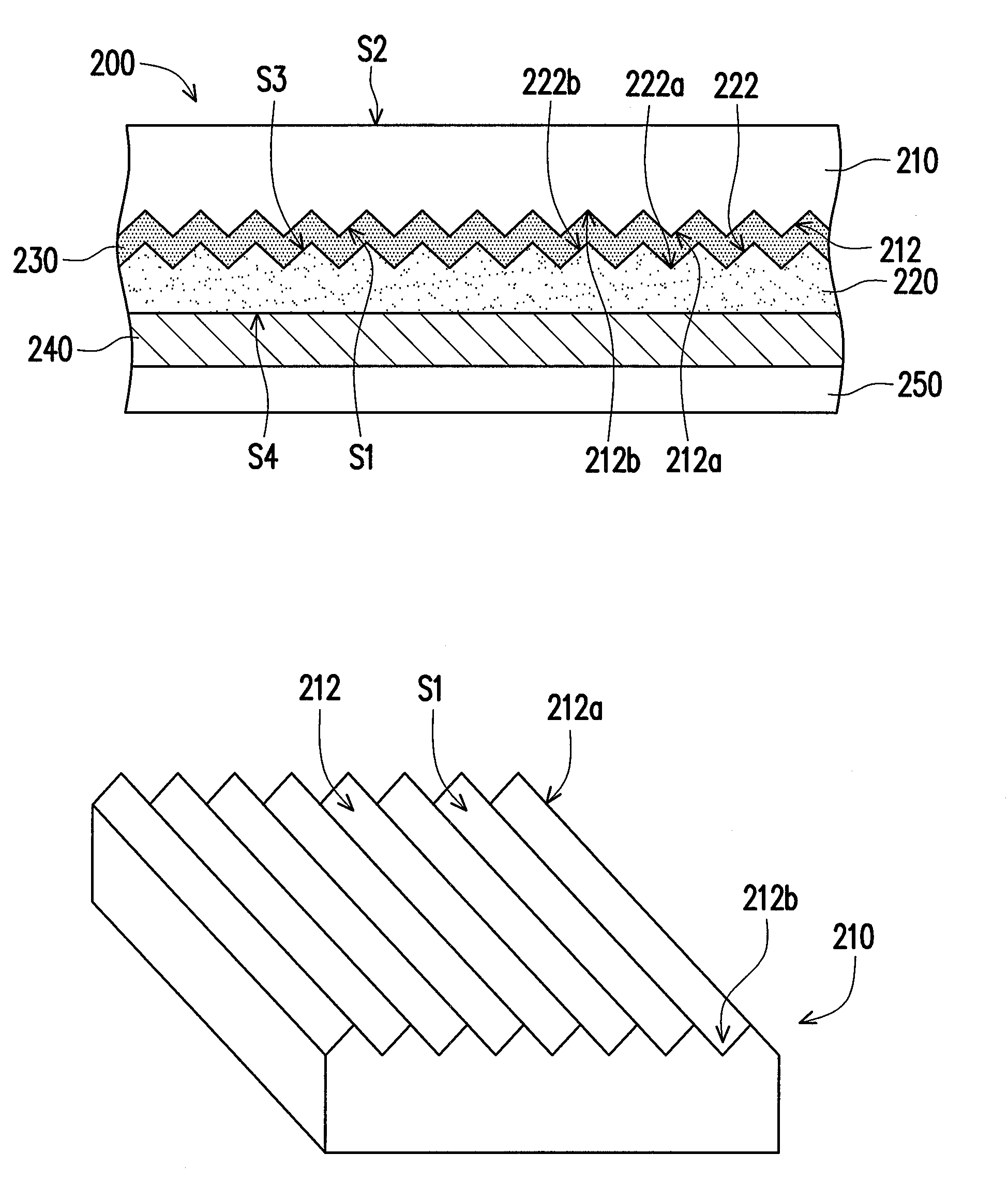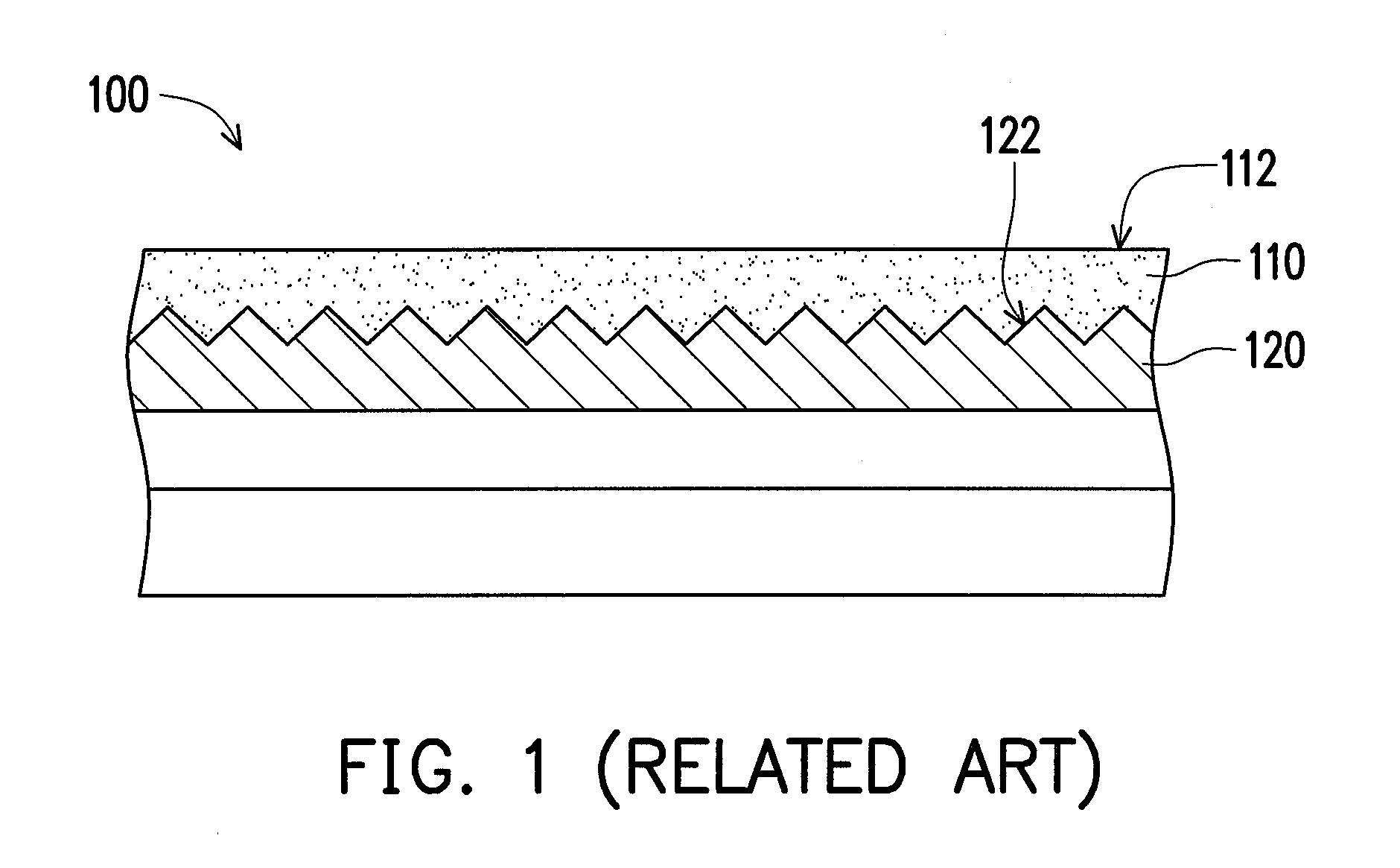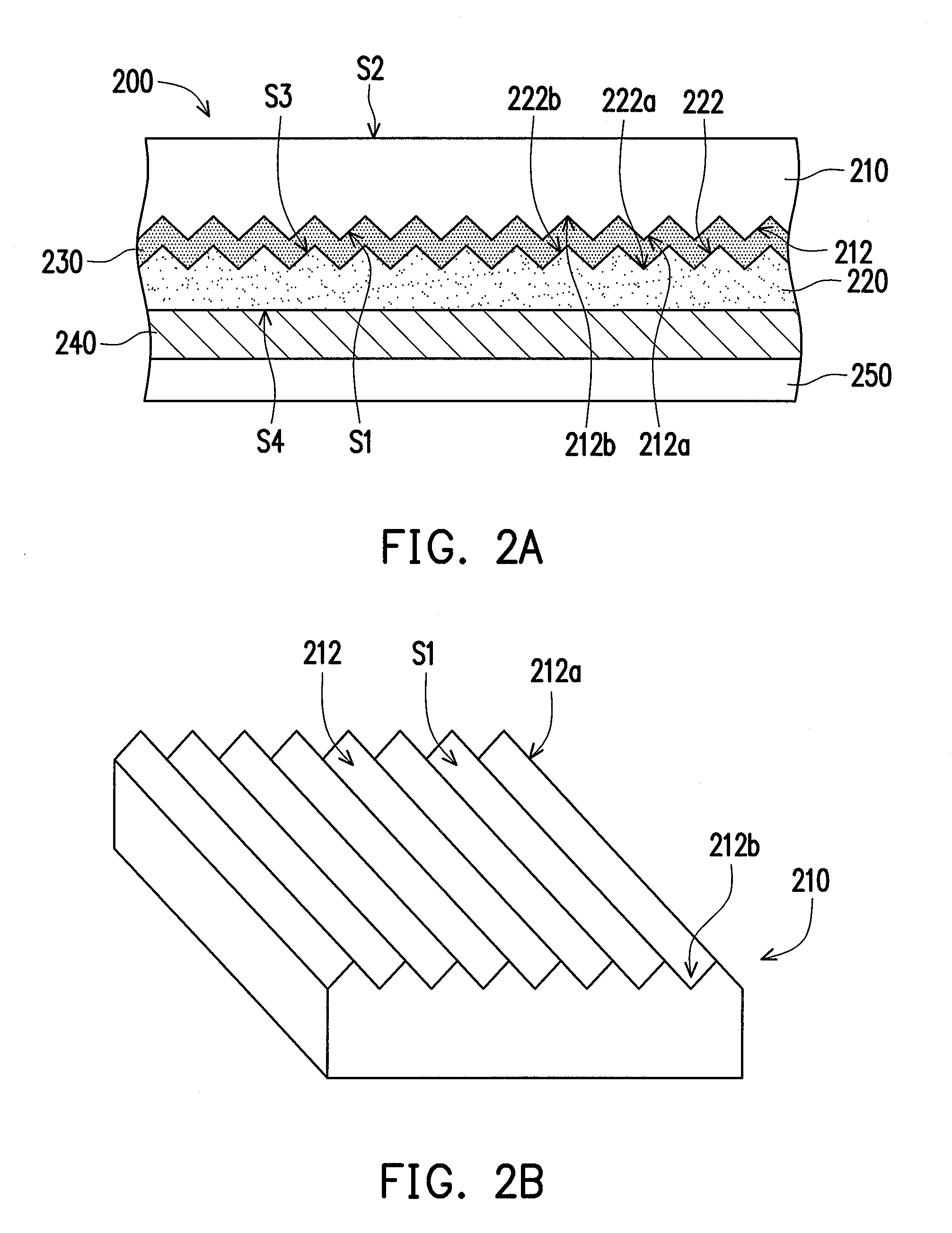Transfer film, method of manufacturing the same, transfer method and object surface structure
a technology of transfer film and surface structure, which is applied in the directions of transportation and packaging, printing, and thermal transfer technology, etc., can solve the problems of increasing labor cost and fabrication time, prone to damage of the ink layer, and the development of thermal transfer technology
- Summary
- Abstract
- Description
- Claims
- Application Information
AI Technical Summary
Benefits of technology
Problems solved by technology
Method used
Image
Examples
example i
[0090]A submount is provided, which is a polyester film with a thickness of 50 μm. A brushed filament texture with jog structure is fabricated on the submount using a roller with rough surface, so as to form a substrate with the brushed filament texture. A thermosetting acrylic release resin is then coated on the substrate with the brushed filament texture, and serves as a release layer. Afterwards, a liquid radiation curing resin layer is coated on the release layer by means of the scraper coating. The composition proportion of the aforesaid liquid radiation curing resin layer includes 60˜120 units of bifunctional acrylate-based monomer, 60˜120 units of bifunctional epoxy acrylate-based oligomer, 5˜10 units of photoinitiator, and 50˜100 units of ethyl acetate solvent.
[0091]Thereafter, the liquid resin layer is baked by a hot-air oven of 100° C. and then radiated by ultraviolet (UV) with energy of 800 mJ / cm2, so as to cure the liquid resin layer and thus form a protection layer with...
example ii
[0093]A finished product is fabricated in a similar manner of the process illustrated in Example I, while the difference lies in that the composition proportion of the liquid resin layer is changed to 40˜80 units of bifunctional acrylate-based monomer, 20˜60 units of multiple functional acrylate-based monomer, 60˜120 units of bifunctional polyurethane acrylate-based oligomer, 5˜10 units of photoinitiator, and 50˜100 units of ethyl acetate solvent.
[0094]The surface hardness, chemical resistance and abrasion resistance of the finished products obtained from said Examples I and II are evaluated under testing standards described as follows.
[Surface Hardness Test]
[0095]A pencil hardness tester under a load of 500 g is utilized for testing, wherein Mitsubishi pencils special for hardness test are adopted. The pencil was moved at an angle of 45° on the surface of the completely cured protection layer so as to test progressively from hard to soft in accordance with hardness order of the pen...
example iii
[0100]A submount is provided, which is a polyester film with a thickness of 50 μm. A desired three-dimensional pattern is printed directly on the submount, so as to form a substrate with the three-dimensional pattern. A thermosetting acrylic release resin is then coated on the three-dimensional pattern, and serves as a release layer. Afterwards, a liquid radiation curing resin layer is coated on the release layer by means of the scraper coating. The composition proportion of the aforesaid liquid radiation curing resin layer includes 60˜120 units of bifunctional acrylate-based monomer, 60˜120 units of bifunctional epoxy acrylate-based oligomer, 5˜10 units of photoinitiator, and 50˜100 units of ethyl acetate solvent.
[0101]Thereafter, the liquid resin layer is baked by a hot-air oven of 100° C. and then radiated by ultraviolet (UV) with energy of 800 mJ / cm2, so as to cure the liquid resin layer and thus form a protection layer with a thickness of 8 μm. An ink layer is then printing on ...
PUM
| Property | Measurement | Unit |
|---|---|---|
| Adhesivity | aaaaa | aaaaa |
| Metallic bond | aaaaa | aaaaa |
| Surface structure | aaaaa | aaaaa |
Abstract
Description
Claims
Application Information
 Login to View More
Login to View More - R&D
- Intellectual Property
- Life Sciences
- Materials
- Tech Scout
- Unparalleled Data Quality
- Higher Quality Content
- 60% Fewer Hallucinations
Browse by: Latest US Patents, China's latest patents, Technical Efficacy Thesaurus, Application Domain, Technology Topic, Popular Technical Reports.
© 2025 PatSnap. All rights reserved.Legal|Privacy policy|Modern Slavery Act Transparency Statement|Sitemap|About US| Contact US: help@patsnap.com



